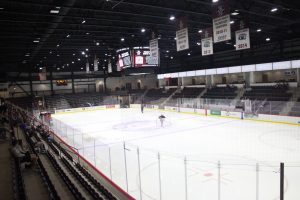Parasitic species is first aerobic lifeform to lack mitochondrial DNA
May 2, 2019
The cells of aerobic life forms contain an energy-producing organelle called the mitochondria. Mitochondria contain their own unique genetic material, in addition to the DNA found in a eukaryotic cell’s nucleus or prokaryotic cell’s cytoplasm. A team of researchers from Germany, Egypt, France, Canada, the United Kingdom and the Czech Republic, led by Uwe John of the Alfred Wegener Institute in Bremerhaven, Germany, have discovered an organism that defies this rule.
In a report released on April 24 in “Science Advances,” researchers determined that the dinoflagellate Amoebophrya ceratii, a single-celled marine parasite, has functional mitochondria without any genetic material. This discovery marks the first time that scientists have found an oxygen-using organism with functional mitochondria that lacks any mitochondrial DNA.
Mitochondria are thought to be remnants of ancient bacteria that were engulfed by early eukaryotic cells and eventually became an integral part of energy production in those cells. After the mitochondria were engulfed through a process called phagocytosis, some genes needed for mitochondrial function were relocated to the nucleus of the host cell.
However, the mitochondria kept a few genes. For example, human mitochondria contain 37 genes needed for function.
Eukaryotic cells are cells that encase their DNA in a nucleus and have other membrane-bound organelles in their cytoplasm, the jelly-like
fluid of the cell. The mitochondria reside in the cytoplasm and are the main sites for cellular respiration. Nicknamed the powerhouse of the cell, the mitochondria are home to production of ATP, or adenosine triphosphate, which is the cell’s main energy-carrying molecule.
The eukaryote A. ceratii is a dinoflagellate. These organisms make up a major portion of the plankton found in the oceans and have a wide range of lifestyles. About half of the 2,000 known species use photosynthesis like plants, while others are predatory. Others alternate among different forms of nutrition, depending on the available resources. Many members of the group are parasites. “These single-celled organisms float in the water as what we call dinospores until they find a suitable host,” John explains.
Dinoflagellates are often found responsible for harmful algal blooms. The algal blooms can deplete oxygen levels in a water body as the algae decomposes. This process can lead to die-offs of other marine species. Researchers are interested in studying A. ceratii to understand how it can be better managed and controlled.
The team of researchers sequenced the genome, or all the genetic material of
A. ceratii. It consists of roughly 100 million base pairs, which is low by dinoflagellate standards. Other species have a genome a thousand times larger, much larger than the human genome.
Many of the parasites pursuing this lifestyle do not produce all of the metabolic products they need to survive; they simply steal them from their host. This makes them host-dependent, but it also means there are many genes they can simply function without.
However, A. ceratii has a different situation. “In this species, nearly all metabolic processes still work, so it should also be able to get by quite well on its own,” said John.
In species related to A. ceratii, these tiny power plants’ DNA still contains three genes, which experts have generally assumed to be indispensable. However, A. ceratii has apparently cut out the mitochondria genome entirely; despite many efforts, the team was unable to find any trace of it.
Two of the three genes were nowhere to be found and the third, cytochrome c oxidase 1, had migrated to the nucleus. “That absolutely amazed me” said John, “because there’s no oxygen-breathing life-form on record that has no genetic material of its own in its mitochondria. This downsizing could come in handy when the parasites need to rapidly form a large number of new dinospores.”






